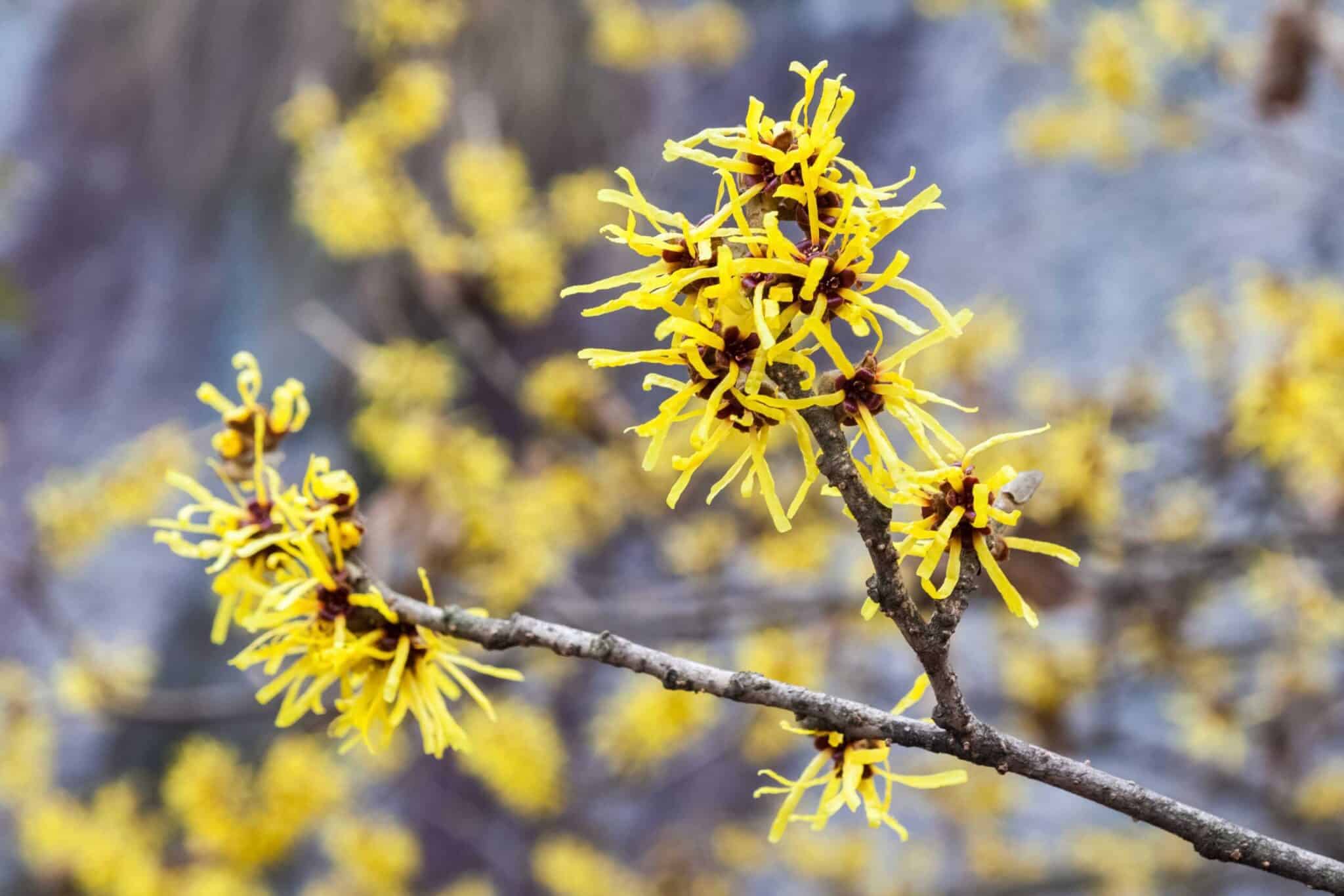Synonyms: Spotted Alder, Winter Bloom, Witch Hazel
Parts Used: Bark, Leaves
Botanical Description:
Hamamelis virginiana is a deciduous shrub native to eastern North America, ranging from Nova Scotia to Minnesota and as far south as central Texas. This hardy plant thrives in USDA zone 5 and typically grows up to 5 meters (16 feet) tall and wide at a slow rate.
It blooms from September to November, with seeds ripening between August and September of the following year. The flowers are hermaphrodite (having both male and female reproductive organs), featuring four ribbon-shaped, pale to bright yellow petals — occasionally orange or reddish — measuring 10-20 mm in length. These flowers grow in clusters and emit a subtle fragrance in the crisp autumn air.
The fruit is a woody capsule (10-14 mm) that matures a year after pollination, bursting open to eject two shiny black seeds as far as 10 meters from the parent plant — a unique dispersal mechanism.
Preferred Habitat:
Witch hazel favors well-drained sandy or loamy soils and adapts to both acidic and alkaline conditions. It grows well in light woodland shade or semi-shaded areas and requires moist soil for optimal growth.
Traditional Uses:
North American Indigenous tribes historically valued Witch Hazel bark for its medicinal virtues. It was widely used to treat wounds, tumors, eye inflammations, and other ailments. In modern herbalism, Witch Hazel remains popular for its astringent, haemostatic (blood-stopping), sedative, and tonic properties.
Therapeutic Applications:
Topical Uses:
-
Bruises and sore muscles
-
Varicose veins and haemorrhoids
-
Sore nipples, skin inflammations, and insect bites
-
Eye drops, skin tonics, and cosmetic preparations
Astringent tannins in the bark are believed to be responsible for these effects. Commercially available witch hazel water (a steam distillate) is milder, as it lacks the astringent tannins found in tinctures or fresh extracts.
Internal Uses:
-
Diarrhoea, dysentery, and colitis
-
Heavy menstrual bleeding and vaginal discharge
-
Internal bleeding and prolapsed organs
-
Varicose veins and phlebitis (inflammation of veins)
-
Nosebleeds and excessive bleeding from wounds
The leaves are typically harvested in summer and dried for later use in teas or infusions, while the bark is collected in spring.
Effects on Circulatory Health:
Witch Hazel’s primary medicinal effect lies in its ability to strengthen and tone blood vessels, especially veins. It’s highly effective for conditions involving bleeding, inflammation, and weakened vein walls. Common remedies involve treating:
-
Bleeding haemorrhoids
-
Varicose ulcers
-
Nosebleeds
-
Heavy menstruation
-
Internal bleeding associated with trauma
Additional Applications:
Hamamelis is also known to alleviate certain headaches, especially those linked to blood vessel inflammation. Moreover, it has been used to support mental wellness, easing symptoms of irritability, depression, impatience, and mood disorders that worsen in warm, humid environments but improve outdoors or during focused activity.




